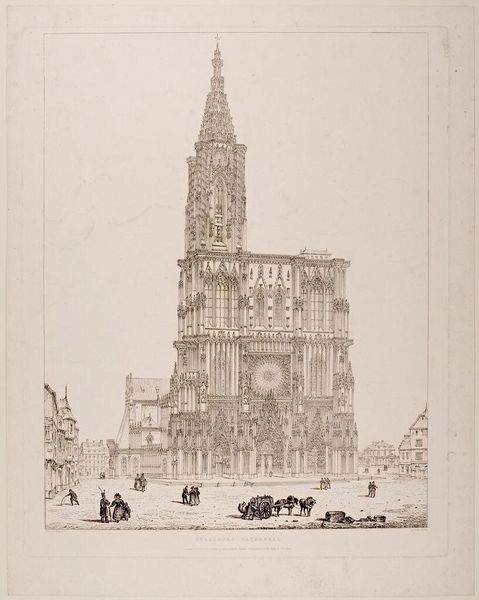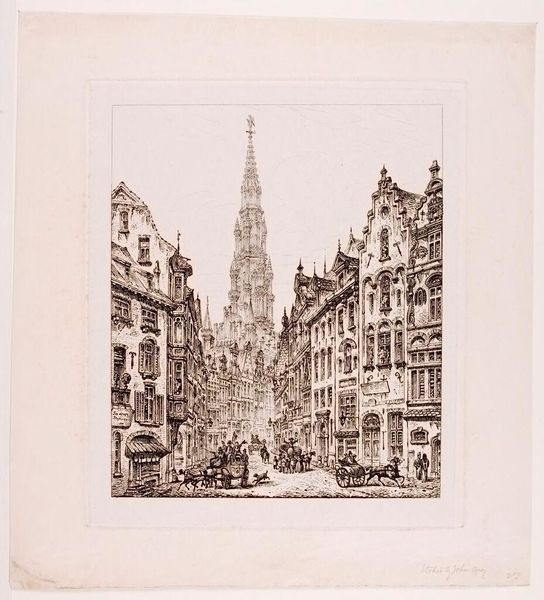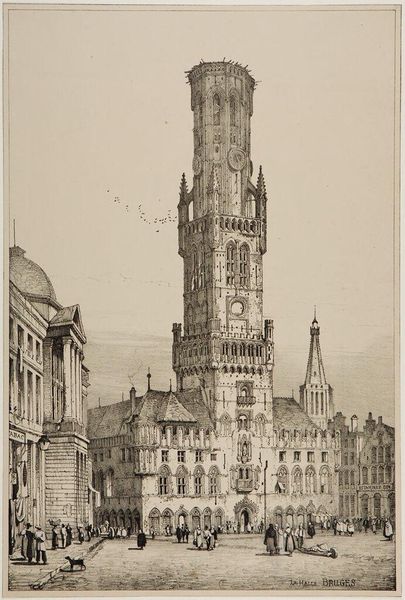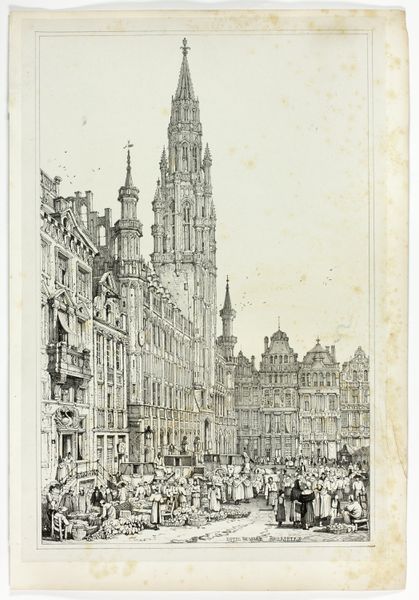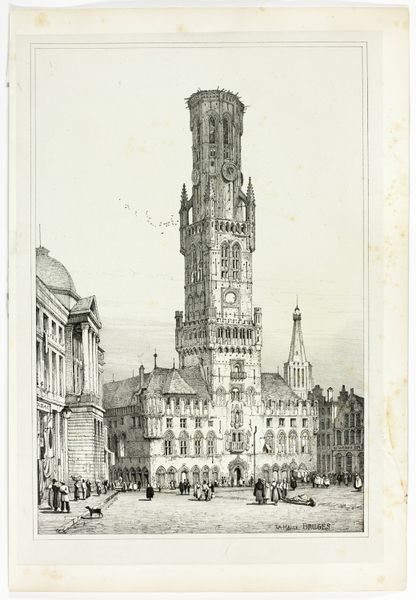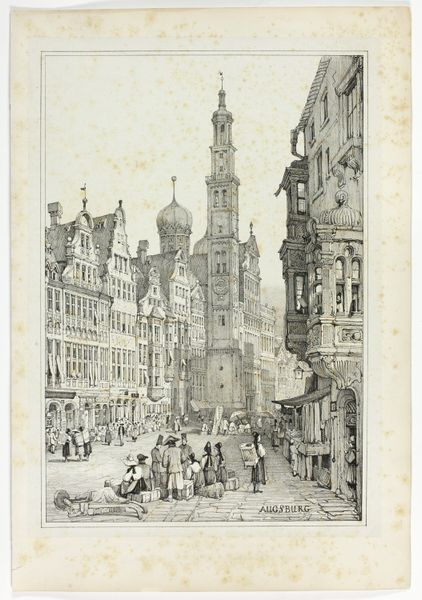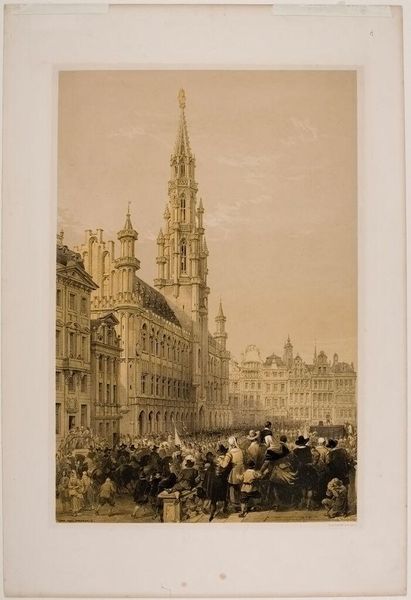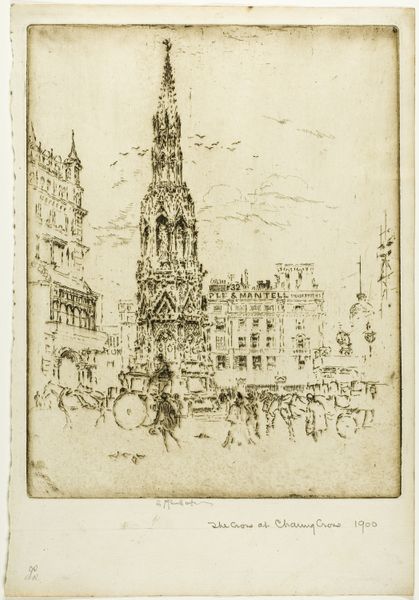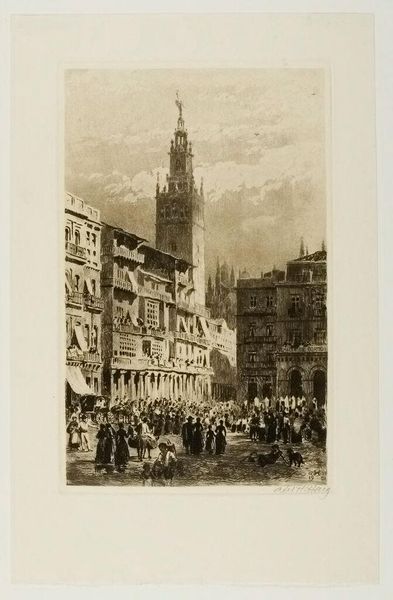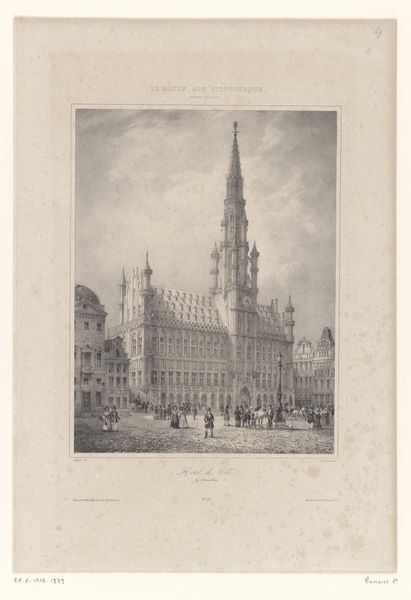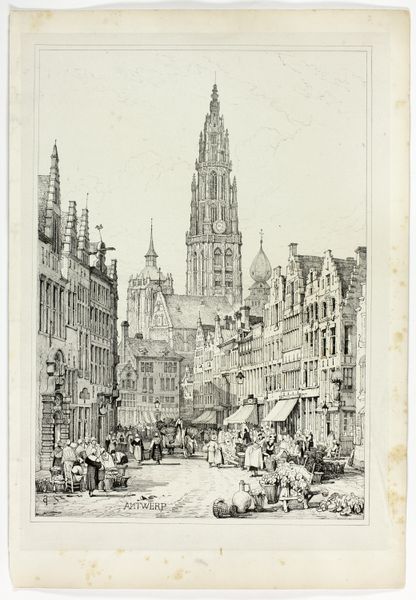
Copyright: CC0 1.0
Editor: This is John Coney’s "Cloth Hall, Bruges". It's hard to put a date on it, but Coney lived between 1655 and 1722. It gives a wonderful sense of bustling life around this imposing building. What do you see in this piece? Curator: The Cloth Hall speaks volumes about civic pride. The tower piercing the sky is a symbol of mercantile power and the intricate façade reflects the skill of the artisans. Do you notice how the people almost seem to be in conversation with the architecture? Editor: That's interesting. They are not just there, they are interacting with the space. Curator: Precisely. Coney uses the building as more than a backdrop; it is a cultural anchor, a silent witness to the daily lives unfolding beneath it. Notice how the tower looms over the crowd, representing stability and the enduring nature of civic life. Editor: I never thought of buildings having a symbolic role, but this makes perfect sense. Curator: Images of architecture, particularly civic structures, often served as emblems of collective identity. This print preserves and transmits a particular vision of Bruges, its prosperity, and its place in the world. Editor: I'll definitely look at architectural art differently now.
Comments
No comments
Be the first to comment and join the conversation on the ultimate creative platform.

